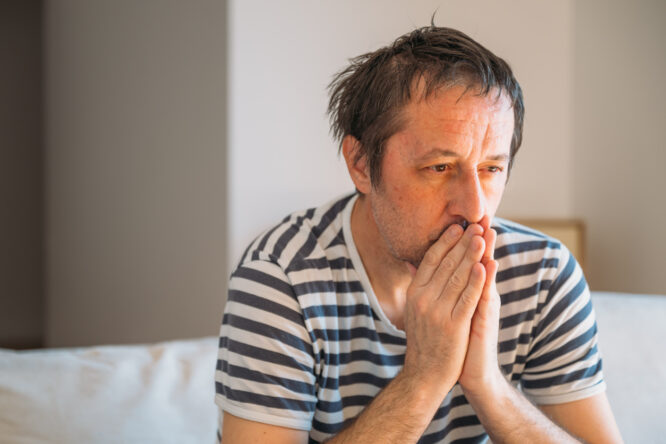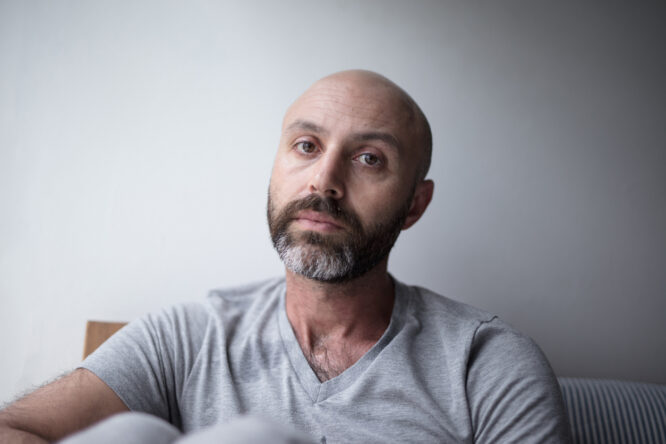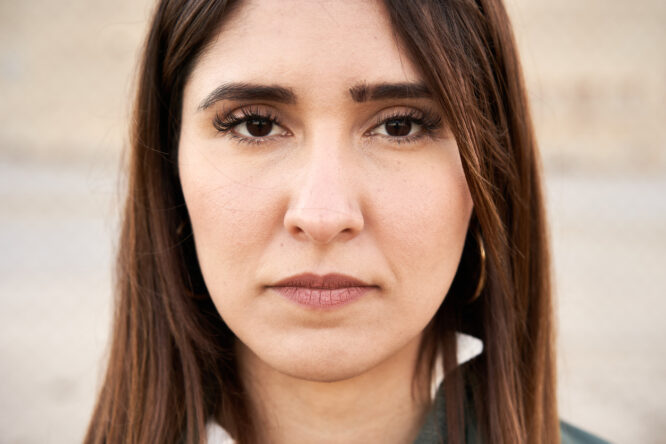OCD is one of the most widely misunderstood mental health conditions.

It’s surprising, really, especially since at least a million people in the UK—or approximately one in six, according to the Royal College of Psychiatrists—suffer from it. It’s often reduced to quirks, exaggerated for laughs, or misunderstood as a desire for neatness. But real OCD is far more complex, and often much more painful, than the stereotypes suggest. When people don’t understand what it really looks like, those living with it can feel even more isolated and dismissed. These are some of the most common misconceptions about OCD, and what’s actually true beneath the surface.
1. OCD is so much more than just a fixation on being tidy or organised.

Being clean or liking things a certain way doesn’t automatically mean someone has OCD. Real OCD involves intrusive thoughts and compulsions that are distressing, not satisfying. It’s not about liking order—it’s about feeling compelled by anxiety to prevent something awful. People with OCD don’t clean because it’s fun. They often do it out of fear, panic, or guilt. For many, their compulsions have nothing to do with tidiness at all.
2. Not all compulsions are visible—in fact, many aren’t.

Many people think OCD is all about repeated handwashing, checking locks, or arranging objects. However, a lot of compulsions happen internally. These might include mental counting, repeating phrases silently, or running through mental checklists to feel “safe.” Just because someone’s condition doesn’t show on the outside doesn’t mean it’s not taking up huge mental space. It’s just happening in silence, often without anyone noticing.
3. People with OCD don’t enjoy their rituals.

Obsessions and compulsions are distressing, not comforting. The actions may briefly reduce anxiety, but they aren’t satisfying. They feel necessary in a way that’s exhausting and inescapable. Many people with OCD know their thoughts or actions aren’t rational, but that doesn’t stop the cycle. Knowing something logically doesn’t stop it from feeling terrifying emotionally.
4. Not all people with OCD are irrationally afraid of germs.

Contamination OCD exists, but it’s only one type. People can have obsessions around hurting other people, religious guilt, sexual thoughts, numbers, symmetry, or even fear of making the wrong decision. These can be deeply upsetting and misunderstood. When this condition is portrayed only as germ-related, it leaves people feeling confused and ashamed about their experience, especially when their obsessions feel taboo or strange to talk about.
5. People can have OCD without knowing it.

Because the media paints OCD in such narrow terms, many people with it don’t recognise their own symptoms. They might think they’re just overly anxious, perfectionistic, or plagued by guilt, without realising there’s a pattern underneath. That delay in understanding often leads to years of suffering without support. And when the condition is invisible or internal, it’s even harder to name without access to good information.
6. It’s not about being quirky or perfectionistic.

Saying things like “I’m so OCD about my desk” turns a debilitating condition into a personality trait. OCD isn’t about liking things neat. It’s about feeling overwhelmed by intrusive thoughts and doing whatever it takes to find temporary relief. Perfectionism can overlap with OCD, but they’re not the same. The core of OCD is anxiety and unwanted mental noise, not an aesthetic preference or love of control.
7. Intrusive thoughts are not wishes or desires.

One of the hardest parts of OCD is the intrusive thoughts. These are unwanted, disturbing, and often go against the person’s values. But because they feel so wrong, people with this condition may feel intense guilt or shame for having them at all. The thoughts aren’t a reflection of who someone is. They’re symptoms, and the more a person fears or resists them, the stronger the cycle becomes. Compassion and context matter here.
8. Compulsions are more than just repetition—they also offer relief.

Someone with OCD might do something repeatedly, but not because they want to. They’re trying to get a sense of safety, certainty, or peace. The repetition isn’t the point; the relief is. Once that relief wears off, the anxiety comes back, and the cycle continues. Understanding this helps shift the view of OCD from strange behaviour to a deeply understandable survival strategy.
9. Telling someone to “just stop” is never helpful.

People with OCD usually know their compulsions aren’t logical. Of course, stopping them isn’t just about willpower; it’s about facing overwhelming anxiety without the tool they’ve been using to cope. Comments like “Just don’t do it” or “Stop overthinking” can feel dismissive. Support looks more like curiosity, patience, and helping someone feel safe while they figure out better tools.
10. OCD isn’t always obvious to other people.

Some people live with severe OCD that no one around them sees. They’re functioning at work, managing their home, and masking their distress through internal rituals or mental loops that go unnoticed. That invisibility can make it even harder to get help, especially if they feel like they have no “proof” of what they’re going through. Quiet suffering is still suffering, and it counts.
11. It can affect decision-making in surprising ways.

OCD often makes simple decisions feel huge. Choosing what to eat, what to say, what to wear—these can all become battlegrounds when the brain gets stuck in fear of making the wrong choice or doing harm. What looks like indecisiveness is often someone stuck in a loop of “What if?” Their mind isn’t being dramatic; it’s trying to avoid imagined danger that feels completely real to them.
12. It’s not something people can snap out of.

OCD isn’t a phase, a bad habit, or a choice. It’s a neurological condition that often requires a combination of therapy, support, and sometimes medication. It doesn’t just fade with time or positive thinking. The idea that someone should “grow out of it” or “relax more” completely misses the depth of what they’re managing. Recovery takes effort, and often support that understands the condition properly.
13. People with OCD are often exhausted, not high-strung.

Living with OCD means your brain is running constant checks in the background. It’s tiring. Even when someone looks calm on the outside, they might be mentally navigating fears, rules, or guilt that never seem to end. That internal noise drains energy, patience, and focus. What other people interpret as aloofness or moodiness might just be someone trying to stay steady while their brain won’t let up.
14. Compassion helps more than correction.

Well-meaning people sometimes try to interrupt a compulsion or rationalise someone’s fear. However, what actually helps most is feeling understood—being met with empathy instead of logic or advice. Letting someone know you believe them, even if you don’t fully understand, can make all the difference. OCD thrives in shame. Compassion is what starts to untangle it.




